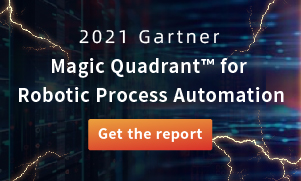Lattrice Goldsby, head of the U.S. Department of Agriculture's RPA division, estimates the RPA will achieve close to $2.5 million in cost avoidance and save about 78,000 work hours annually starting in the first quarter.
“RPA is absolutely recognized as strategic, not only at the Office of the Chief Information Officer level but at the department level,” Dave Peters, associate CIO at USDA’s Digital Infrastructure Services Center, told FedScoop. “As the new leadership has come on board, this is one of the programs that’s really gotten a lot of positive attention because of the strong financial and operational results.”
The 2021 U.S. fire season turned out to be one of the worst on record. California alone has more than 8,000 fires on nearly 2.5 million acres. In order to quickly start the firefighting work, the U.S. Forest Service coordinated a large number of firefighters, aircraft, chemicals, heavy machinery, and other equipment across the country.
During the rescue process, thousands of invoices and payroll handling processes were generated. However, many financial operations were still done manually. “From there the automation will take nine to 12 weeks to develop, with an estimated reduction in 5,000 to 10,000 work hours annually upon completion,” says Lattrice Goldsby. “Currently, RPA is widely used in finance, procurement, IT, and human resources among others.
When it comes to RPA usage, the USDA has a set of mature standards to ensure that automation can scale-out smoothly and keep data safe. For example, whether the data in the tasks are structured or unstructured, whether they are confidential, how many applications need to be automated, whether to use attended or unattended robots, etc. With these standards problems such as data leakage caused by RPA can be effectively reduced.
In order to encourage various departments to use RPA, the USDA launched an RPA Development Competition. This is a three-month competition where all departments applying RPA can submit their works. In this successful competition, USDA received work from many departments. They also expressed their wishes to hold it twice a year in the future.
According to USDA CIO Gary Washington, automation courses have been created to help increase employees' proficiency in RPA. They include: automated business process analysis, automated process design, automated data report analysis, and other basic courses in RPA So far, 27 groups of employees have successfully graduated, 19 of which completed their training during the COVID-19 pandemic.
Not only has RPA been implemented in scenarios in the U.S. Department of Agriculture, it has also been applied in other key public sectors. So far, 23 important government agencies in total have RPA deployed, including NASA, the United States Department of Agriculture, the Federal General Services Administration, the U.S. Department of Defense, the U.S. Army, the U.S. Air Force, the U.S. Defense Logistics Department. Since the first RPA robot was applied in NASA in 2018, it has been deployed in many scenarios of multiple U.S. federal agencies at scale until today, which has achieved significant benefits. .
In December 2021, the US federal government released the "The State of Federal RPA 2021 ". According to the report, the number of RPA robots deployed in 2021 reached 1001, a year-on-year increase of 250% compared to 460 in 2020; 1,499,105 man-hours were saved in 2021 through RPA, a year-on-year increase of 177% compared to 848,336 man-hours in 2020.
Looking ahead, the US federal government will deploy RPA robots in more business scenarios to achieve digital transformation, in a move to reduce costs and increase efficiency.
About Cyclone Robotics
Cyclone Robotics, a world-leading RPA provider and thought leader in hyperautomation, has experienced rapid expansion with an average annual growth rate of 400% since 2019. The company now has more than 500 members across 19 subsidiaries and branches around the world, serving nearly 1,000 global customers across Asia Pacific, Europe, and the Middle East. In early 2021, Cyclone Robotics established its Singapore branch to empower APAC enterprises across a wide variety of sectors to accelerate their digital transformation efforts with Cyclone’s full RPA products & services portfolio. Its explosive business growth, leading technology, strong team, advanced product ideas, and ability to seize business opportunities have been particularly recognized by investors and international authorities.





